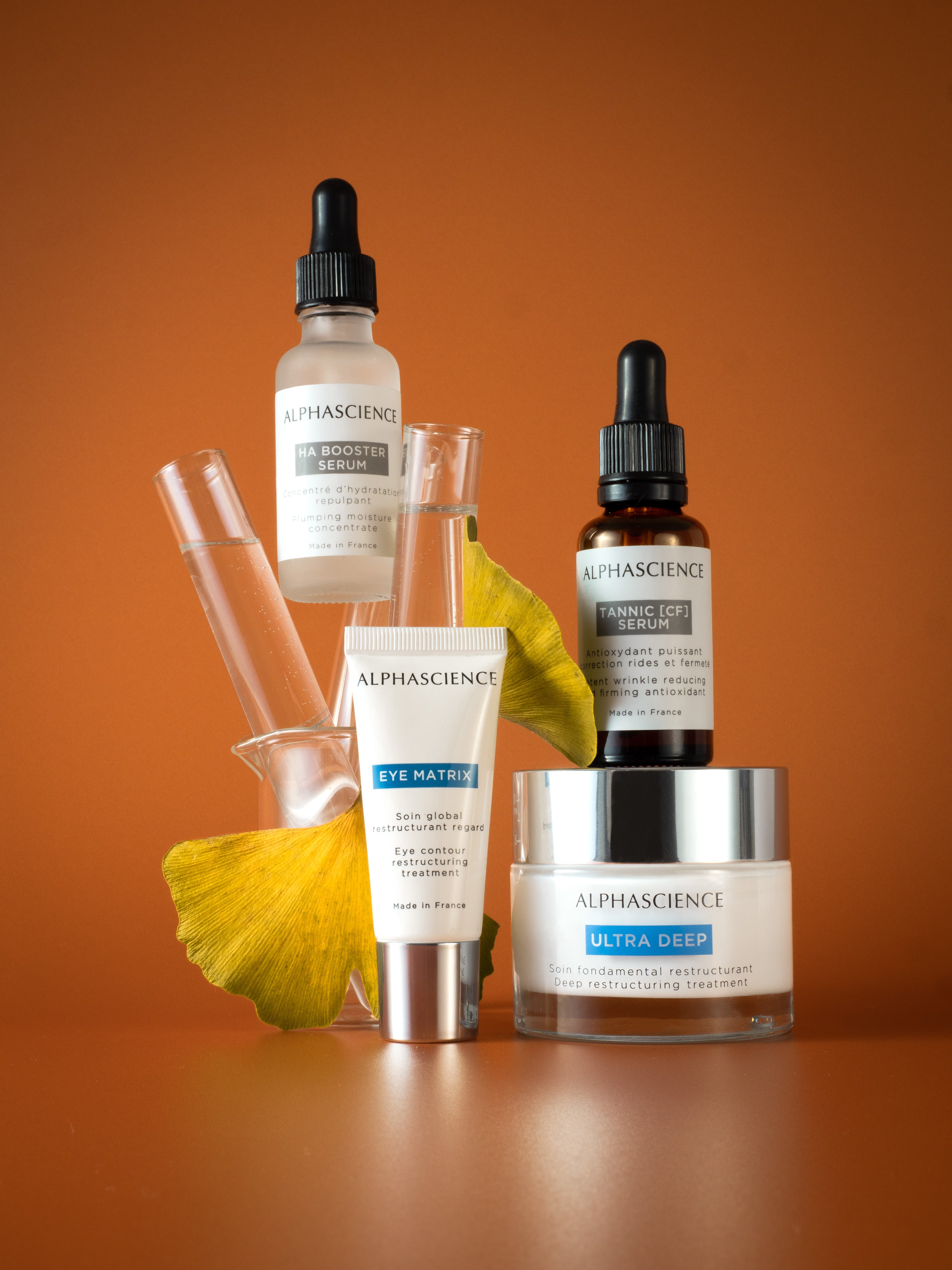Vitamin C - The most advanced technology to stabilize antioxidants
PHYTIC [TC] SERUM: A UNIQUE AND STABLE MOLECULAR COMBINATION
|
8% L-ASCORBIC ACID (vitamin C in its natural form)
|
|
2% PHYTIC ACID
|
|
0,2% TANNIC ACID
|
COMPARATIVE TECHNIQUES TO STABILIZE L-ASCORBIC ACID (VITAMIN C)
L-ascorbic acid (vitamin C in its natural form) is highly unstable in contact with air and water oxygen, especially with warm temperature.
Different techniques are used to stabilize it with unequal results.
|
|
ADVANTAGES |
DISADVANTAGES |
|
ALPHASCIENCE TECHNOLOGY BIOMIMETISM - INSPIRED BY NATURE Molecular combination of L-ascorbic acid with powerful antioxidants. |
Excellent stability in the skin and with heat. |
Complex formulas |
|
Encapsulated L-ascorbic acid |
Easy to formulate |
Limited to medium concentrations (3 to 4%). Low stability. |
|
Vitamin C derivatives (ascorbosilane, sodium ascorbyl phosphate, etc) |
Easy to formulate |
Low anti-aging and antioxidant efficiency. |
|
Dry form of L-ascorbic acid (powder) to mix with a solution before use. |
Easy to formulate. Stable before mixing. |
No guarantee of stability after mixing. |
BIOMIMETISM: ALPHASCIENCE IS INSPIRED BY NATURE TO STABILIZE ANTIOXIDANTS
How do fruits which contain a lot of water manage to keep their vitamin C and antioxidants content stable and active?
L-ascorbic acid (vitamin C in its natural form) is fully stable in an orange for example, because it is associated with other antioxidants such as polyphenols and flavonoids.
This assemblage forms a complex chemical structure that is totally stable dynamically.

ALPHASCIENCE STABLE MOLECULAR COMBINATION
By observing nature and thanks to our control of the chemical interactions between antioxidants and Vitamin C, we developed a unique associative complex of powerful antioxidants which ensures the stabilization of highly concentrated L-ascorbic acid.

FOR THE 1ST TIME: STABILIZATION EVIDENCE AT HIGH TEMPERATURE
Evolution of L-Ascorbic Acid concentration in Alphascience serum
HPLC mesures by an indépendant laboratory (SGS Multilab)

Bibliography:
- Nusgens BV, Humbert P, Rougier A, et al. Topically applied vitamin C enhances the mRNA level of collagens I and III, their proces- sing enzymes and tissue inhibitor of matrix metalloproteinase 1 in the human dermis J Invest Dermatol 2001; 116 : 853-859
- Stimulation of collagen gene expression by ascorbic acid in cultured human fibroblasts. A role for lipid peroxidation? M Chojkier, K Houglum, J Solis-Herruzo and D A Brenner
- Ascorbic acid enhances the expression of type 1 and type 4 collagen and SVCT2 in cultured human skin fibroblasts. Y Kishimoto, N Saito, K Kurita, K Shimokado
- Marta I. Rendon MD, Jorge I. Gaviria MD - Review of Skin-Lightening Agents - Dermatologic Surgery
- Crit Rev Food Sci Nutr. 1995 Nov;35(6):495-508. Phytic acid in health and disease. Zhou JR1, Erdman JW Jr.
- Dr Zhong, Soongsil University
- Polyphenol tannic acid inhibits hydroxyl radical formation from Fenton reaction by complexing ferrous ions. George K.B. Lopes, Herbert M. Schulman, Marcelo Hermes-Lima

![MELA BRIGHT [C+] - SÉRUM 30ml / 1 Fl Oz](http://www.alphascience.com/cdn/shop/files/PACKSHOT-5_165x.png?v=1760454901)



![TANNIC [CF] SERUM 30 ML / 1 Fl. Oz.](http://www.alphascience.com/cdn/shop/files/PACKSHOT_f4332f56-3f9c-438f-8934-9f81e21c380d_165x.png?v=1760452179)


Leave a comment
Please note, comments need to be approved before they are published.